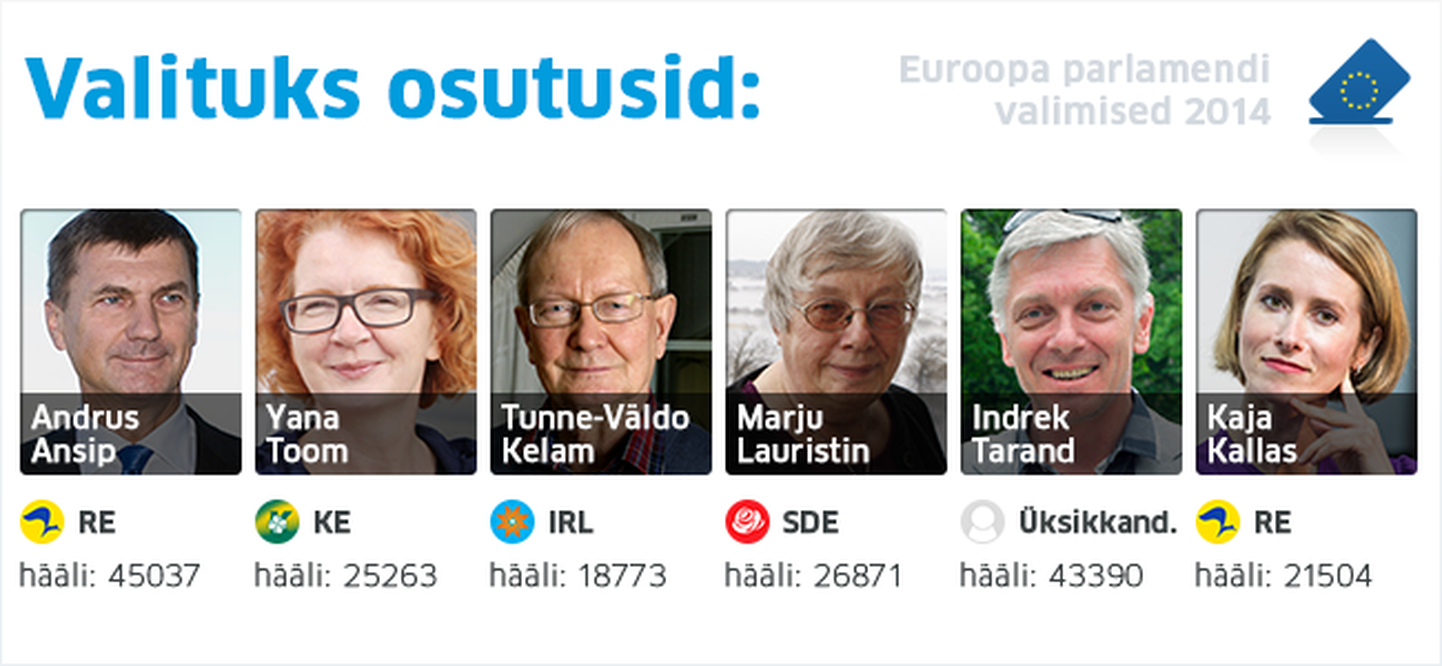
MEP seat the result of timely advertisement and fatness of party purse, says TNS Emor research expert Aivar Voog

MEP seat the result of timely advertisement and fatness of party purse, says TNS Emor research expert Aivar Voog
At the latest European elections, a decisive factor was intensiveness of advertisement during the two final weeks leading up to Election Day. Among other things, this seemed to impact ranking within political parties.
A survey of pre and post election studies, as well of the actual outcome, confirms that the European Parliament elections differ from Riigikogu and local ones in voter logic. EU elections are the least important ones both in Estonia and elsewhere in Europe; thus, the motivation for voters to participate is usually very low. As expected, the principal factor for voters again was how fit a candidate was to represent Estonian state in Europe. The decision whom to favour was basically taken during the final weeks before the Election Day.
TNS Emor poll results which showed voter positions as at May 11th set the following order: Centre Party 21.6 percent, SDE (soc dems) 18.6 percent, Reform Party 18.2 percent, IRL 16.4 percent, Indrek Tarand 14.8 percent, and EKRE (Conservative People’s Party) 3.4 percent. After the study was done, parties kicked into top advertisement gear with spending thereof raised multiple times. In addition to TV, printed, Internet, and radio ads, it was attempted to impact people in crowded places.
Over the final two weeks, Reform Party dominated the Estonian language TV and printed media, Centre Party ruling in Russian language TV media. The final weeks’ activeness in media and crowded public places helped to substantially lift the percentage of Reform Party by the end of Election Day – or, rather – helped to cash in on its potential as Reform Party popularity in Riigikogu elections context at the beginning of May was higher than in polls measuring EU-related popularity. SDE’s smaller spending as compared to two main competitors left them in the shadows with voters. By the Day, it was showing in a drop.
Ads’ spending is important but definitely not decisive – as, first of all, shown by votes going to Indrek Tarand and other single candidates. Whoever voted for these opted to totally ignore endeavours by parties on the media advertisement market and to make a choice based on outside-of-advertisement argument alone. Even so, with most voters popularity is somewhat proportionate with advertisement spending, especially with that of the two last weeks.
In party lists also, the best-advertised candidates got lion’s share of votes. The link definitely isn’t one-on-one, but it is there. In Centre Party list, for instance, Jüri Ratas was No 2; and, in TNS Emor studies of end of April and start of May, he looked likely to equal Kaja Kallas. In reality, Kaja Kallas got 6.4 percent of votes while Jüri Ratas settled for under half of that – 2.6 percent.
Such gap was largely caused by the fact that, in Centre Party TV ads, clips featuring Jüri Ratas (under one percent of all political TV clips) were aired almost 20 times less than these of Edgar Savisaar, Mihhail Stalnuhhin or Yana Toom over the two final weeks.
Meanwhile, the other major parties only showed No 1 twice as often as No 2 (like Mr Kelam versus Ms Ergma; or Mr Ansip vs Ms Kallas). The fact that inside a party ad spending is not everything was revealed by Centre Party advertisement input and actual outcome: in TV at least, Centre Party advertised Mr Savisaar the most, followed by Mr Stalnuhhin and Ms Toom. Even so, Centre Party voters favoured Ms Toom who beat Mr Savisaar and Ms Stalnuhhin by quite a margin.
The last one included, Estonia has now had three EU elections. At all of these, a candidate has arisen whose popularity skyrocketed during the final weeks and who managed to grab bulk of the last-minute-deciders. In 2004, Toomas Hendrik Ilves was like that; in 2009, Indrek Tarand did the trick; and in 2014, it was Andrus Ansip and Yana Toom. In high likelihood, the next i.e. 2009 EU elections will bring yet another attractive one to pocket bulk of the swingers.